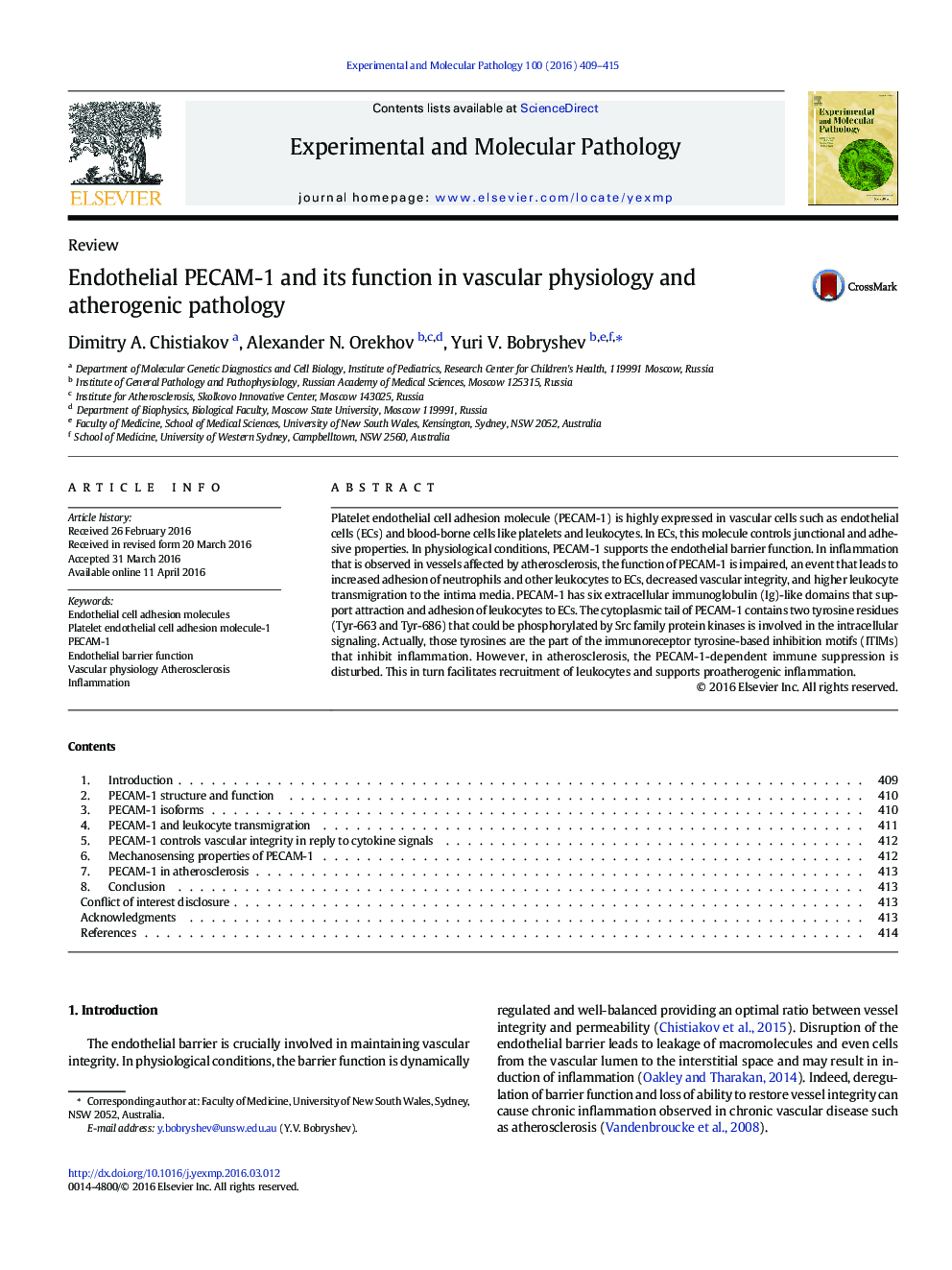| Article ID | Journal | Published Year | Pages | File Type |
|---|---|---|---|---|
| 2774854 | Experimental and Molecular Pathology | 2016 | 7 Pages |
Platelet endothelial cell adhesion molecule (PECAM-1) is highly expressed in vascular cells such as endothelial cells (ECs) and blood-borne cells like platelets and leukocytes. In ECs, this molecule controls junctional and adhesive properties. In physiological conditions, PECAM-1 supports the endothelial barrier function. In inflammation that is observed in vessels affected by atherosclerosis, the function of PECAM-1 is impaired, an event that leads to increased adhesion of neutrophils and other leukocytes to ECs, decreased vascular integrity, and higher leukocyte transmigration to the intima media. PECAM-1 has six extracellular immunoglobulin (Ig)-like domains that support attraction and adhesion of leukocytes to ECs. The cytoplasmic tail of PECAM-1 contains two tyrosine residues (Tyr-663 and Tyr-686) that could be phosphorylated by Src family protein kinases is involved in the intracellular signaling. Actually, those tyrosines are the part of the immunoreceptor tyrosine-based inhibition motifs (ITIMs) that inhibit inflammation. However, in atherosclerosis, the PECAM-1-dependent immune suppression is disturbed. This in turn facilitates recruitment of leukocytes and supports proatherogenic inflammation.
